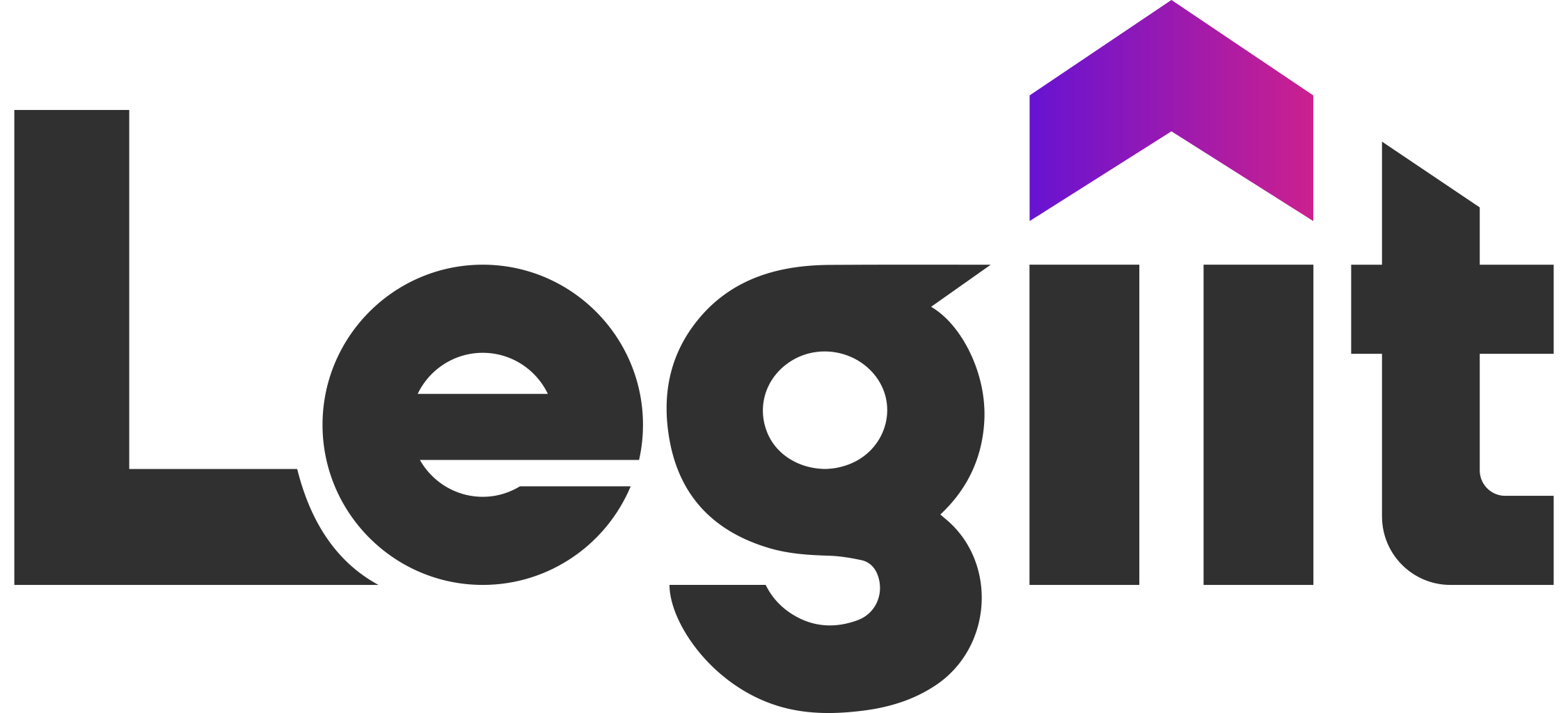Blogging can be incredibly rewarding and a great source of passive income.
With a blog, you can generate affiliate commissions, make money with display advertising, or even sell your own products.
But, is it easy to grow a blog from scratch? Not really.
See, a lot goes into building a blog that generates consistent revenue on autopilot.
And not all strategies work.
In this blog post, you’ll learn how to grow a blog from scratch the right way.
Let’s talk.
Pick the Right Niche (Very Important)
This is arguably going to be the most important step in your affiliate marketing journey.
You don’t want to get into the wrong niche and start from scratch again.
Your affiliate marketing success depends on it.
So, how do you pick your blog’s niche?
Find Your Interest
Think about what you’d like to talk about. That’s it.
You’ve got your niche. Next, just make sure it’s profitable; we’ll talk about that later.
If not, you can always move on to the next step.
That’s because it’s not necessary to write every blog post yourself.
You can always outsource blog post writing to someone who’s an expert in the field.
Do Market Research
Make a list of topics you’re interested in and see which ones have enough demand in the market.
For instance, if you want to talk about “Hiking”, check if it’s popular enough.
To do that, you can use Google Trends.
It’ll give you an overview of your topic in the form of a graph.

If you see a fairly uniform graph, know that the topic will most likely stay in demand in the future as well.
Pick a Niche
You don’t want to pick a broad topic as it’d be tough to build credibility around it.
A narrow niche is relatively easier to work on.
For instance, the “Outdoors” niche would be a hard nut to crack.
Whereas, if you narrow it down to “Cycling”, you won’t be competing with authority websites.
But, it still might be a little too competitive.
You can further narrow it down to “Cycling for beginners”.
Make Sure It’s Profitable
To make good money with your blog, you want to pick a profitable niche.
One way to check the potential of a keyword is by searching it on Google. See if any brands are targeting it.
If it’s targeted by an advertiser, you’ve chosen the right keyword.
Also, see if there are enough products to promote in your niche.
Find Profitable Keywords
Once you have your niche, it’s time to find profitable keywords around it.
Thankfully, you don’t need a paid keyword research tool for that.
Google Keyword Planner
Google Keyword Planner is the best option for beginners who don’t want to spend on paid tools yet.
However, it’s designed for pay-per-click ads, which means you’ll have to use it wisely for SEO purposes.
Here’s how you can extract a long list of potentially profitable keywords with Google Keyword Planner.
In your Google ads account, to go:
- Tools & Settings
- Keyword Planner
- Discover new keywords
Enter your main keyword and let it go to work.
You’ll get tons of related keyword ideas.

The only metric you should be looking at for now is the monthly search volume.
Others are for advertisers.
Ubersuggest
Although Ubersuggest isn’t a completely free keyword research tool, its free version is more than enough when you’re starting out.
You get three searches per day, with a related keyword’s list and actionable metrics on every keyword.
Just go the tool page and enter your main query. It’ll spit out a short list of related keywords that you can create blog posts around.

A stand-out feature of Ubersuggest is its SEO difficulty score.
However, you don’t want to fully rely on the metric.
I’ll tell you how you can qualify every keyword before working on it in a while.
Let’s first cover a paid keyword tool.
Ahrefs

Ahrefs is a leading SEO toolkit that covers everything from keyword research to competitor analysis.
After you get your hands on this one, you won’t have to worry about investing in another tool again.
But, it can be quite expensive especially when your blog isn’t making much.
So, we won’t recommend this one for those who don’t want to invest upfront.
With keyword research tools out of the way, let’s tell you how to qualify a keyword using SERP analysis.
Now, although this step isn’t necessary as it takes manual work, it can help you find easy-to-rank keywords.
SERP Analysis
Before diving in, it’s important that you understand a couple of terms.
Domain authority: The domain authority or the DA of a web page is the overall authority of a website.
Page authority: The page authority or a PA is the authority of a particular web page.
But, why do you have to know about DA and PA?
Because it will help you understand the competition of a keyword on Google’s first page.
So, first, install a browser extension that tells you about the DA and PA of the first-page ranking results.

After adding it to your browser, simply search your keyword in Google and look at the DA/PA of the ranking pages.

Now, the higher these numbers for a particular web page, the more difficult it would be for you to outrank that page.
You want to find a web page with a fairly low authority (Below 30 DA) and target it as your competitor for that keyword.
Found your competitor? Visit the page and observe its content for:
- Comprehensiveness or length
- Images
- Linking strategy
Then, open your word processor and produce something much better.
Look for any topics that your competitor hasn’t covered and include them in your post.
An FAQ section at the end would also be great for stealing featured snippets.
We’ll dive deeper into how you can optimize your blog post for SEO.
By now, you have your niche, a list of keywords, and competitors.
It’s time to think about how you are going to monetize it.
Decide on Monetization Methods
Now, you can monetize your blog in a variety of ways.
The two most common are:
- Affiliate marketing
- Display ads
Join Affiliate Programs
Affiliate marketing is when you partner up with a brand and help them sell their products.
You get an affiliate link from that brand (Affiliate program) that you can promote on your blog.
The most popular affiliate program is Amazon Associates.

It’s popular because the barrier to entry is quite low and there are tons of products that you can promote.
And since you’re probably starting out in affiliate marketing, Amazon Associates is perfect for you.
Others include:
- CJ Affiliate
- Impact Radius
- Peerfly
- And, more
Sign Up for an Ad Network
As for monetizing a blog with display ads, you can sign up with a variety of ad platforms like:
- AdSense
- Ezoic
- AdThrive
- And, more
So, as a beginner, you won’t be able to start working with them right off the bat.
The good thing is there’s a very low barrier to entry with Google AdSense.
You just need to have a good number of quality posts on your blog to get approved by Google AdSense.
Moreover, Ezoic is now open for all, so you can get started even if your blog is brand new.
Creating a Blog in 2024
With niche selection and keyword research out of the way, it’s time to build a profitable blog from scratch.
Pick the Right Hosting
This is one of the first decisions you need to take while building a blog.
Now, there are plenty of hosting services out there, and some of them can be ridiculously cheap.
You don’t want to save a few bucks and face problems later.
We’d recommend investing in fast and reliable hosting.
One way to find a good hosting service is by reading online reviews.
If you ask us, Bluehost would be perfect for beginners.
Or, if you’re not heavy on the budget, you could go with Namecheap.
The customer support of Namecheap hosting service is one of the best.
Choose a Fast Theme
Your blog’s theme has more impact on the user experience and SEO rankings than you might think.
A fast theme reduces your bounce rate and improves your organic rankings.
The good thing is you don’t have to invest in a paid theme initially.
GeneratePress and Astra are the two most commonly used free themes that will do the job effectively.
But, to scale, you’d eventually want to invest in the paid version of your theme.
It would provide you with more customization options.
Use the Right WordPress Plugins
Now, if you’re using WordPress (which you should), you’d need to install some plugins to add more functionality to your blog.
But, the problem is that as you add more plugins to your site, it tends to get slower, because of the extra code.
So, you only want to use the plugins that are absolutely necessary, especially for SEO.
And, take a look at the reviews of every plugin before installing it.
You can easily install every plugin by going to the:
- WordPress dashboard
- Plugins
- Add new
Search for the plugin, and click on “Install” and then “Activate”.
Here are the WordPress SEO plugins that we’d recommend:
- All in One SEO
- YOAST SEO (On-page and technical SEO)
- W3 Total Cache
- Schema (For showing schemas)
- EWWW Image Optimizer
- UpdraftPlus (for Backup/Restore)
Moving on.
Create Great Content
Content creation is going to be the most important part of your blogging journey.And although it looks simple, publishing rank-worthy content on a regular basis requires skills.
The next few sections are going to help you create the type of content that not only gets ranked but also makes your readers act.
Let’s start.
Improve Your CTR with SEO Meta Description
Your meta description determines how many people click on your page on the first SERP (search engine result page).
That’s because it’s shown just under your main title.

There’s limited space so you have a few words to persuade a reader to click on your link.
This is where your copywriting skills can come in handy.
Also, don’t forget to include your target keyword in the meta description as well.
Hook Readers with Your Blog Post Headlines
The first thing anyone is going to read is your headline, so it should grab their attention instantly.
If you’re using WordPress, the headline would be your H1 heading.
Here are a few tips to write great blog post headlines:
- Include your target keyword upfront
- Use a power word
- Use a number
- Keep it short (It’s only visible for around 60 characters)
The goal of your headline is also to get the reader to read the introduction.
Write Powerful Introduction
The introduction of your blog post is a short piece of copy that hooks your readers and gets them to read the rest of the post.
Here’s how you can create a great introduction:
Problem: Introduce the problem that the visitor came for.
Agitate: Tell them what would happen if they don’t solve it.
Solve: Introduce them to your solution (The blog post).
Use Subheadings
Subheadings give your blog post a structure.They make it easy to skim and scan.
That’s important because many visitors wouldn’t want to read every word of your post.
They’d prefer skimming your post to get the gist of every section.
You can help them do that by including subheadings whenever they make sense.
Also, you want to include your target keyword in at least one subheading.
Write Simple and Short Paragraphs
The tone and vocabulary of your blog posts affect their readability.
So, before you start writing, think about who you’re writing for.
They certainly won’t like to read complex sentences with uncommon vocabulary.
Your content should be simple and sound like you’re talking to a friend.
Make it sound personal.
Plus, long paragraphs are a turn-off and can send your reader away.
You want to write short paragraphs, with a maximum of 2 – 3 sentences per paragraph.
Optimize Your Images
Your blog posts need eye-catching visuals to reduce the monotony of text.
But, you need to optimize your images for two major reasons:
- To prevent them from slowing down your web page
- To rank them on Google Images
Large files can hurt the loading speed of your web page.
So, keep your blog post images under 100kb.
Plus, you should include your target keyword in the ALT texts of your images.
ALT texts help search engines understand what your images are about.
Create Helpful Content
You shouldn’t always try to sell with your content.
In fact, it’s a good idea to focus on informational and helpful content.
This will help you:
- Build credibility in your industry
- Get in the good books of Google
Have a Linking Strategy
Now, when it comes to blogging, creating great content is half the battle.
You’d need a proper internal linking strategy to let Google understand your site structure.
Plus, referencing external sources (outbound links) can help you build your content’s credibility.
And you can’t afford to ignore the power of backlinks either.
The good thing is you don’t always have to pay to build backlinks to your blog.
Here are a few tried-and-tested link-building strategies:
- Guest posts
- Niche edits
- Broken link building
- HARO link building
- Foundation backlinks
You can use any method you like, just make sure to get backlinks from relevant and high-authority sites.
Go Social
Your content has no value if people don’t know about it, right?
So, you want to get the word out as much as possible.
Create social profiles on popular social platforms like Facebook, Reddit, Quora, and even more.
Try to share every blog post on these platforms.
They can prove to be an additional source of traffic for your blog.
This way, you can also build a following for your blog.
Also, make sure you put social sharing buttons on your blog post pages.
Make it easy for your readers to share your content with their own circle.
Build Your Email List
Your organic rankings might be the primary source of traffic for your blog.
But, you should not rely on a single traffic source as a blogger.
Email list building is one of the best ways to diversify your blog traffic.
Plus, you own your email list, which means you can sell them whenever you want.
Here are a few tips on how to build an email list from your blog:
- Put an opt-in form in the middle of every blog post you publish
- Use pop-ups, without going overboard
- Run Facebook lead generation ads if you have the budget
- Offer something in return (A free trial, a free e-book, etc.)
Don’t Do Everything
Creating and growing a blog from scratch can be a tough task, especially if you are doing it the first time.
There’s:
- Niche research
- Keyword research
- Content creation
- On-page and technical SEO
- Link-building
- Social sharing
- Email marketing
So, it’s a good idea to build a small team and work on a single goal.
The point is you should be only working on the stuff you’re good at or want to learn by practicing.
For instance, let’s say you’re good at writing; outsource everything else to your team members.
The best thing is team building is pretty easy and cost-effective.
That’s mainly because of freelance platforms like Legiit.
So, say you want to outsource all your SEO tasks, you can get an experienced SEO on Legiit to do that.
Or, maybe you don’t want to write, there are plenty of top-rated content writers on Legiit you can trust.
Let’s explore some freelance blogging services that might be of interest to you.
Aberdeenseo (Keyword Research)

Finding the right keywords to write about isn’t always easy.
And since keyword research is such an important part of blogging, you simply can’t afford to ignore it.
The fruitful keyword research service is for you if you don’t want to do it yourself.
The good thing is you can get 20 profitable keywords for just $25.
Seoamber

If you want short, crisp blog posts, this service could be your go-to resource.
The best thing is it’s one of the most used services on Legiit, so you don’t need to worry about the credibility here.
Plus, it’s incredibly cost-effective, so you won’t be adding too much to your expenses.
SamPoyan

Now, you may not be willing to take any chances with your content.
If you need content that grabs your readers by the throat and makes them act, SamPoyan is your guy.
SuperstarSEO

You can do everything right, but if your on-site SEO isn’t great, your blog posts won’t get to the first page of Google.
This on-site SEO audit tells you everything that’s wrong with your web pages, so you can work on them to rank higher.
The best thing? You can get your website checked for on-site issues at a mere $10.
Volarex

Guest posts are one of the best link-building strategies.
But, finding the right websites can be a headache.
If you want to outsource the whole guest posting process, this service is for you.
The cool thing is you can get a guest post backlink from a high-authority traffic website for just $15.
Final Thoughts
Starting a blog is easy, but growing it in the right direction is not.
Many aspiring bloggers don’t realize the importance of niche selection.
They end up investing in the wrong industry and blame the business model for their failure.
There’s nothing that can prevent you from becoming a successful blogger if you:
- Pick the right niche
- Work on the right keywords
- Optimize your pages for SEO and users
- Follow the right linking strategies
- And, importantly, stay consistent
See, blogging and SEO take time to show results.
So, if you’re patient enough, you’ll get the reward.













 Download
Download